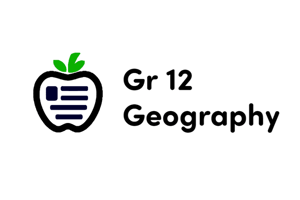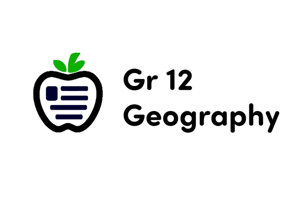Podcast
Questions and Answers
What are the foundational components of Geographic Information Systems (GIS)?
What are the foundational components of Geographic Information Systems (GIS)?
- Hardware, software, data, procedures, network
- Hardware, data, people, network
- Hardware, software, data, people, procedures, network (correct)
- Software, data, people, procedures
Which component of GIS includes physical devices like computers and GPS devices?
Which component of GIS includes physical devices like computers and GPS devices?
- Data
- People
- Software
- Hardware (correct)
What type of data in GIS describes the characteristics and location of features on the Earth's surface?
What type of data in GIS describes the characteristics and location of features on the Earth's surface?
- Spatial Data (correct)
- Procedural Data
- Attribute Data
- Network Data
In GIS, what do users and analysts interpret and apply to facilitate examination of spatial relationships?
In GIS, what do users and analysts interpret and apply to facilitate examination of spatial relationships?
Which GIS component refers to the programs like ArcGIS or QGIS that process spatial data?
Which GIS component refers to the programs like ArcGIS or QGIS that process spatial data?
The descriptive details about spatial data in GIS, such as the type of vegetation or the name of a road, are known as:
The descriptive details about spatial data in GIS, such as the type of vegetation or the name of a road, are known as:
What type of data is best suited for representing continuous phenomena like temperature gradients?
What type of data is best suited for representing continuous phenomena like temperature gradients?
Which GIS functionality involves stacking different types of data in layers to analyze relationships and patterns?
Which GIS functionality involves stacking different types of data in layers to analyze relationships and patterns?
What does 'buffering' involve in GIS analysis?
What does 'buffering' involve in GIS analysis?
In what sector would GIS be used for market analysis, logistics, and real estate activities?
In what sector would GIS be used for market analysis, logistics, and real estate activities?
What is the purpose of data standardization in GIS?
What is the purpose of data standardization in GIS?
What does developing a 'Paper GIS' involve?
What does developing a 'Paper GIS' involve?
What does Geographic Information Systems (GIS) integrate to capture, manage, analyze, and display geographically referenced information?
What does Geographic Information Systems (GIS) integrate to capture, manage, analyze, and display geographically referenced information?
Which component of GIS includes users and analysts who interpret and apply the geographic data?
Which component of GIS includes users and analysts who interpret and apply the geographic data?
In GIS, which type of data refers to the geographical location and characteristics of features on the Earth's surface?
In GIS, which type of data refers to the geographical location and characteristics of features on the Earth's surface?
What does the 'network' component of GIS primarily enable?
What does the 'network' component of GIS primarily enable?
Which program is commonly used in GIS for processing spatial data?
Which program is commonly used in GIS for processing spatial data?
What refers to the descriptive details about spatial data in GIS, such as the type of vegetation or road names?
What refers to the descriptive details about spatial data in GIS, such as the type of vegetation or road names?
What is the primary difference between vector and raster data in GIS?
What is the primary difference between vector and raster data in GIS?
Which of the following is NOT considered a spatial object in GIS?
Which of the following is NOT considered a spatial object in GIS?
Which GIS functionality involves creating zones around map features to analyze impacts, such as pollution spread or noise levels?
Which GIS functionality involves creating zones around map features to analyze impacts, such as pollution spread or noise levels?
Which sector would NOT typically use GIS for market analysis, logistics, and real estate activities?
Which sector would NOT typically use GIS for market analysis, logistics, and real estate activities?
What is the purpose of data standardization in GIS?
What is the purpose of data standardization in GIS?
Which GIS functionality involves extracting information based on specific criteria, such as finding all cities within 50 miles of a coastline?
Which GIS functionality involves extracting information based on specific criteria, such as finding all cities within 50 miles of a coastline?
What is the primary purpose of data sharing and security in GIS?
What is the primary purpose of data sharing and security in GIS?
How does GIS contribute to disaster management in the government sector?
How does GIS contribute to disaster management in the government sector?
Which GIS functionality involves transforming, combining, and extracting data for decision-making processes?
Which GIS functionality involves transforming, combining, and extracting data for decision-making processes?
Why is layering data important in GIS analysis?
Why is layering data important in GIS analysis?
In GIS, what does creating zones around map features for analysis primarily help with?
In GIS, what does creating zones around map features for analysis primarily help with?
What distinguishes raster data from vector data in GIS?
What distinguishes raster data from vector data in GIS?
Which of the following is NOT a key component of a Geographic Information System (GIS)?
Which of the following is NOT a key component of a Geographic Information System (GIS)?
What is the primary purpose of the 'network' component in a GIS?
What is the primary purpose of the 'network' component in a GIS?
Which of the following terms refers to the descriptive details about spatial data, such as the type of vegetation or the name of a road?
Which of the following terms refers to the descriptive details about spatial data, such as the type of vegetation or the name of a road?
Which GIS functionality involves creating zones or buffers around map features to analyze impacts or proximity?
Which GIS functionality involves creating zones or buffers around map features to analyze impacts or proximity?
What is the primary difference between vector and raster data in GIS?
What is the primary difference between vector and raster data in GIS?
Which of the following is NOT a typical application of GIS in the business sector?
Which of the following is NOT a typical application of GIS in the business sector?
Flashcards are hidden until you start studying




